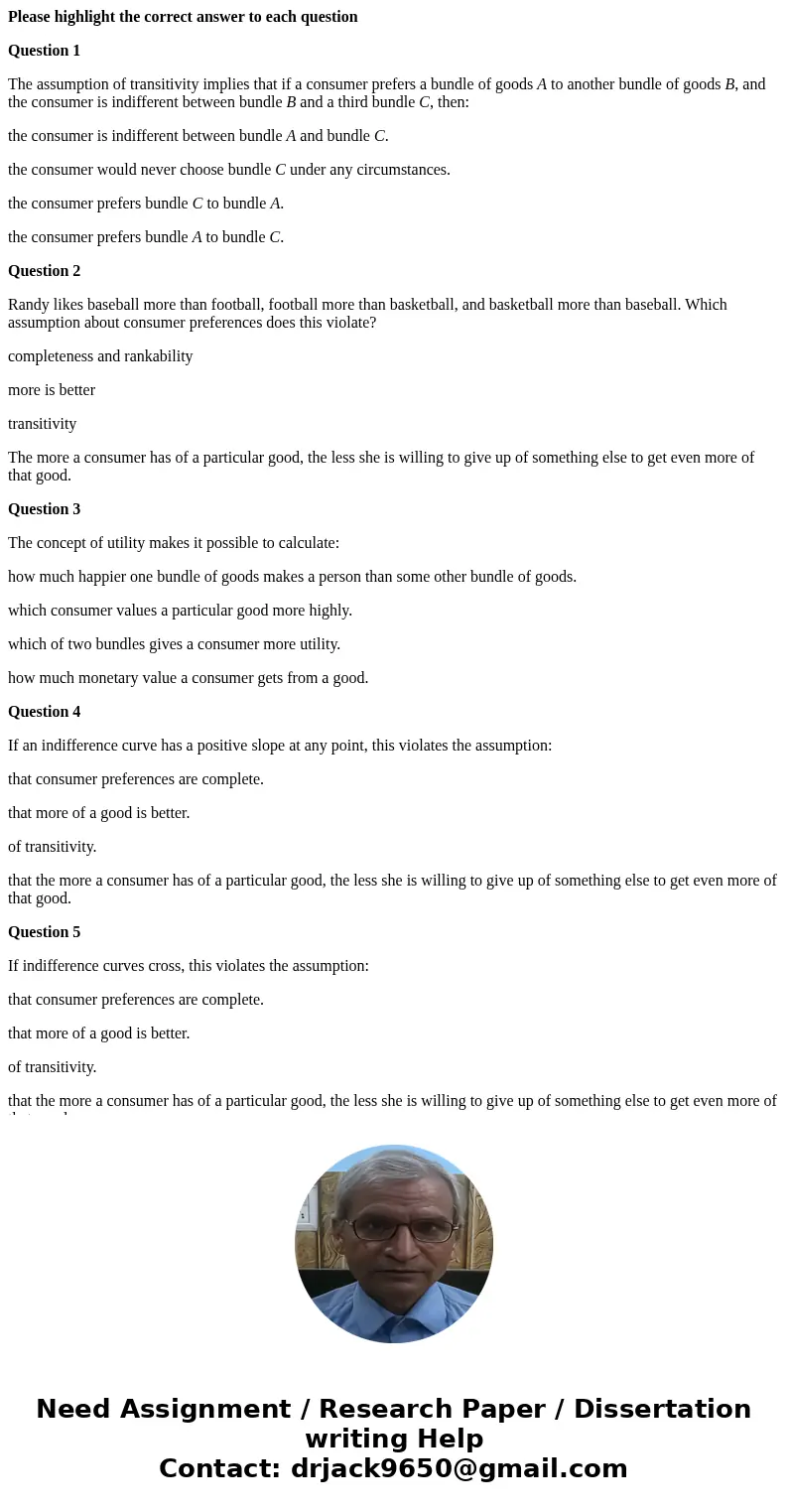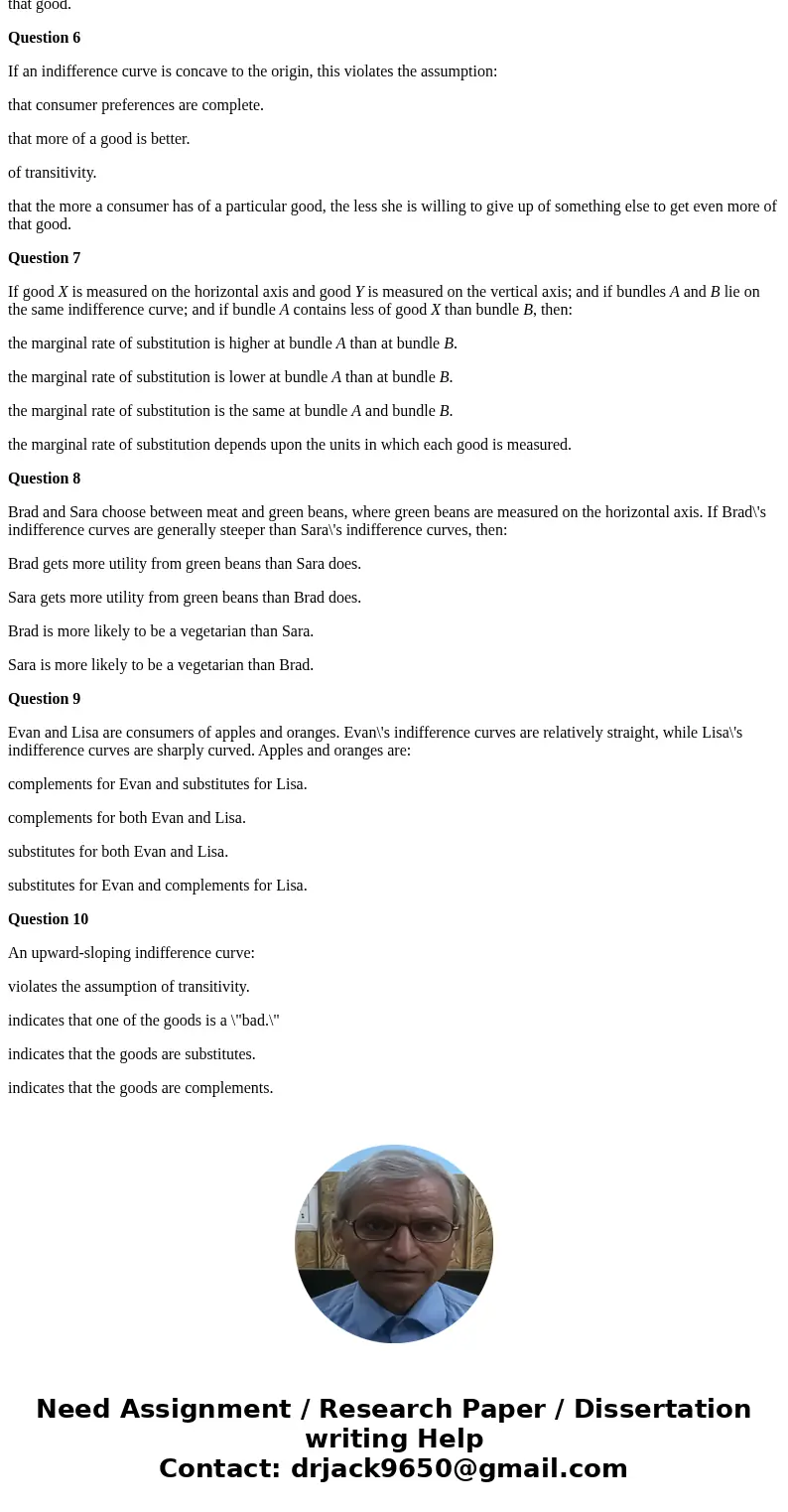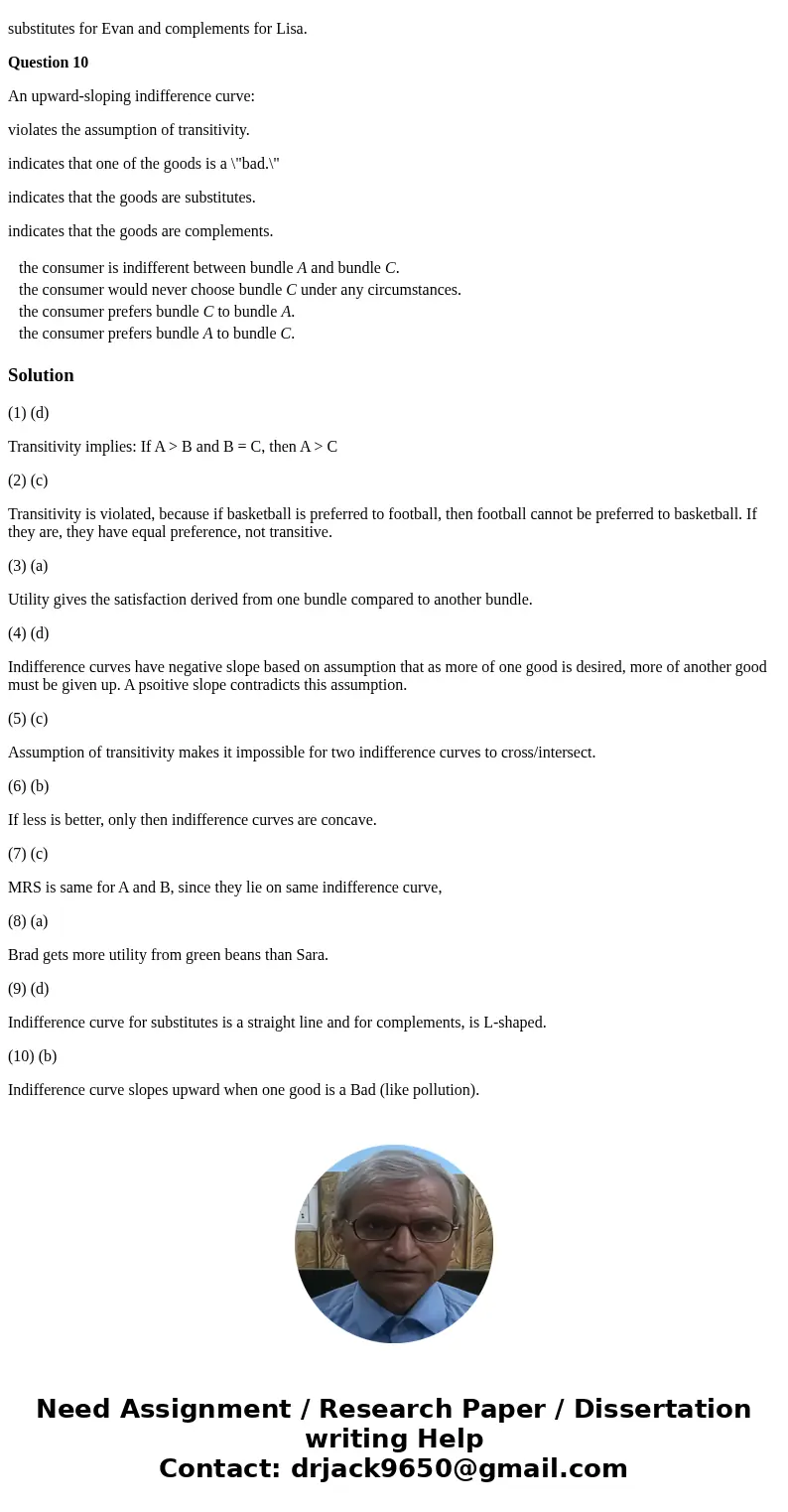Please highlight the correct answer to each question Questio
Please highlight the correct answer to each question
Question 1
The assumption of transitivity implies that if a consumer prefers a bundle of goods A to another bundle of goods B, and the consumer is indifferent between bundle B and a third bundle C, then:
the consumer is indifferent between bundle A and bundle C.
the consumer would never choose bundle C under any circumstances.
the consumer prefers bundle C to bundle A.
the consumer prefers bundle A to bundle C.
Question 2
Randy likes baseball more than football, football more than basketball, and basketball more than baseball. Which assumption about consumer preferences does this violate?
completeness and rankability
more is better
transitivity
The more a consumer has of a particular good, the less she is willing to give up of something else to get even more of that good.
Question 3
The concept of utility makes it possible to calculate:
how much happier one bundle of goods makes a person than some other bundle of goods.
which consumer values a particular good more highly.
which of two bundles gives a consumer more utility.
how much monetary value a consumer gets from a good.
Question 4
If an indifference curve has a positive slope at any point, this violates the assumption:
that consumer preferences are complete.
that more of a good is better.
of transitivity.
that the more a consumer has of a particular good, the less she is willing to give up of something else to get even more of that good.
Question 5
If indifference curves cross, this violates the assumption:
that consumer preferences are complete.
that more of a good is better.
of transitivity.
that the more a consumer has of a particular good, the less she is willing to give up of something else to get even more of that good.
Question 6
If an indifference curve is concave to the origin, this violates the assumption:
that consumer preferences are complete.
that more of a good is better.
of transitivity.
that the more a consumer has of a particular good, the less she is willing to give up of something else to get even more of that good.
Question 7
If good X is measured on the horizontal axis and good Y is measured on the vertical axis; and if bundles A and B lie on the same indifference curve; and if bundle A contains less of good X than bundle B, then:
the marginal rate of substitution is higher at bundle A than at bundle B.
the marginal rate of substitution is lower at bundle A than at bundle B.
the marginal rate of substitution is the same at bundle A and bundle B.
the marginal rate of substitution depends upon the units in which each good is measured.
Question 8
Brad and Sara choose between meat and green beans, where green beans are measured on the horizontal axis. If Brad\'s indifference curves are generally steeper than Sara\'s indifference curves, then:
Brad gets more utility from green beans than Sara does.
Sara gets more utility from green beans than Brad does.
Brad is more likely to be a vegetarian than Sara.
Sara is more likely to be a vegetarian than Brad.
Question 9
Evan and Lisa are consumers of apples and oranges. Evan\'s indifference curves are relatively straight, while Lisa\'s indifference curves are sharply curved. Apples and oranges are:
complements for Evan and substitutes for Lisa.
complements for both Evan and Lisa.
substitutes for both Evan and Lisa.
substitutes for Evan and complements for Lisa.
Question 10
An upward-sloping indifference curve:
violates the assumption of transitivity.
indicates that one of the goods is a \"bad.\"
indicates that the goods are substitutes.
indicates that the goods are complements.
| the consumer is indifferent between bundle A and bundle C. | ||
| the consumer would never choose bundle C under any circumstances. | ||
| the consumer prefers bundle C to bundle A. | ||
| the consumer prefers bundle A to bundle C. |
Solution
(1) (d)
Transitivity implies: If A > B and B = C, then A > C
(2) (c)
Transitivity is violated, because if basketball is preferred to football, then football cannot be preferred to basketball. If they are, they have equal preference, not transitive.
(3) (a)
Utility gives the satisfaction derived from one bundle compared to another bundle.
(4) (d)
Indifference curves have negative slope based on assumption that as more of one good is desired, more of another good must be given up. A psoitive slope contradicts this assumption.
(5) (c)
Assumption of transitivity makes it impossible for two indifference curves to cross/intersect.
(6) (b)
If less is better, only then indifference curves are concave.
(7) (c)
MRS is same for A and B, since they lie on same indifference curve,
(8) (a)
Brad gets more utility from green beans than Sara.
(9) (d)
Indifference curve for substitutes is a straight line and for complements, is L-shaped.
(10) (b)
Indifference curve slopes upward when one good is a Bad (like pollution).



 Homework Sourse
Homework Sourse